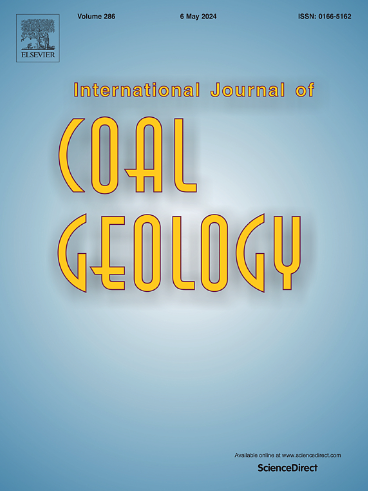Pliensbachian (Early Jurassic) deep-time peatland evolution in Northwest China driven by climate change
IF 5.7
2区 工程技术
Q2 ENERGY & FUELS
引用次数: 0
Abstract
As peat deposits represent significant terrestrial carbon sinks, the processes of peatland initiation, evolution and termination are important components of the global carbon cycle. Research on recent peatlands leaves many questions unanswered concerning peatland evolution and the driving mechanisms for changes in peat forming environments in deep-time. Using a combination of sedimentology, coal petrology and palynology, this study investigates coal seams #B, #C and #D from the Pliensbachian (Early Jurassic) Qaidam Basin in China to elucidate the evolution of mire types and vegetation in their precursor peats, and to evaluate paleoenvironmental conditions during peat formation. Based on ash yield, total sulfur contents and coal maceral proxies, coals #B and #C record rheotrophic swamp forest mires that gradually transitioned to ombrotrophic bog forest mire conditions. Coal #D has a more complex evolution, initially forming under the ombrotrophic bog forest mire conditions that characterized coal #C before transitioning to a rheotrophic mire with initially fen and then wet swamp forest conditions. Finally, coal #D records a reversion to ombrotrophic mire conditions dominated by bog forest. Palynological assemblages and the ratios of hygrophytic (H) to xerophytic (X) plants reveal a remarkable change in peat-forming vegetation and paleoclimate. Coals #B and #C are dominated by woody gymnosperms, while deposition of the precursor peats of coal #D gradually evolved into a mix of woody and herbaceous plants. This floristic transition coincided with intensified climatic oscillations, establishing cyclic dry-wet conditions during the later stages of coal #D deposition. Our results reveal that during the Pliensbachian in the Qaidam Basin, climate forcing on peatland environments was manifested primarily through changes in precipitation and water availability brought on by intensification of seasonality. Peatland evolution was a multi-phase process of changing mire types and an overall vegetation succession from woody to herbaceous and woody plants.
气候变化驱动下的西北早侏罗世深世泥炭地演化
泥炭沉积是重要的陆地碳汇,泥炭地的形成、演化和终止过程是全球碳循环的重要组成部分。对近代泥炭地的研究留下了泥炭地演化和深时泥炭形成环境变化驱动机制等诸多未解之谜。结合沉积学、煤岩学和孢粉学等研究方法,对柴达木盆地早侏罗世B、C、D煤层进行了研究,探讨了泥炭前体泥炭泥沼类型和植被的演化,评价了泥炭形成时期的古环境条件。根据灰分产率、总硫含量和煤组分指标,B煤和C煤记录了流变型沼泽森林泥矿逐渐过渡到营养型沼泽森林泥矿条件。D煤的演化更为复杂,最初形成于以C煤为特征的全营养型沼泽森林沼泽条件下,然后过渡到以沼泽森林为特征的流变型沼泽。最后,煤#D记录了以沼泽林为主的近营养化泥沼条件的恢复。孢粉组合和湿生植物(H)与旱生植物(X)的比例揭示了泥炭形成植被和古气候的显著变化。煤#B和煤#C以木本裸子植物为主,煤#D的前体泥炭沉积逐渐演变为木本和草本植物混合。这种植物区系转变与气候振荡加剧相吻合,在D煤沉积后期形成了干湿循环条件。研究结果表明,柴达木盆地Pliensbachian时期,气候对泥炭地环境的强迫作用主要表现为季节性加剧导致的降水和水分有效性的变化。泥炭地的演变是一个多阶段的沼泽类型变化过程,是一个从木本植物到草本植物和木本植物的整体植被演替过程。
本文章由计算机程序翻译,如有差异,请以英文原文为准。
求助全文
约1分钟内获得全文
求助全文
来源期刊

International Journal of Coal Geology
工程技术-地球科学综合
CiteScore
11.00
自引率
14.30%
发文量
145
审稿时长
38 days
期刊介绍:
The International Journal of Coal Geology deals with fundamental and applied aspects of the geology and petrology of coal, oil/gas source rocks and shale gas resources. The journal aims to advance the exploration, exploitation and utilization of these resources, and to stimulate environmental awareness as well as advancement of engineering for effective resource management.
 求助内容:
求助内容: 应助结果提醒方式:
应助结果提醒方式:


